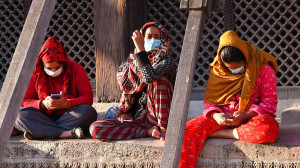Columns
Hammer, sickle and the political tickle
Nepali communist parties have become authoritarian enclaves led by unretiring megalomaniacs.
Anurag Acharya
Nepal’s Communist movement was founded on the revolutionary legacy of young Nepalis who fought against the dynastic and autocratic Rana regime. Pushpalal Shrestha, who established Nepal’s first communist party, was inspired by the disbanded outfit Nepal Praja Parishad. Shrestha’s brother Gangala was among Parishad’s founding members, who was killed by the regime when he was only 22 years old. Pushpalal established the Nepal Communist Party while studying in India, along with other Nepali political activists like Nara Bahadur Karmacharya and Niranjan Govinda Baidhya.
The NCP was established in the post-World War II era, when the Soviet Union defeated Nazi Germany, and Mao Tse-tung had established the People’s Republic of China. Despite its popularity among Nepali youths, the party was legally banned from mainstream Nepali politics until 1956, when the party accepted the constitutional monarchy and participated in the parliamentary elections. After King Mahendra captured power in December 1960, the Nepali communist movement was polarised between the radical bloc that was opposed to the constitutional monarchy and the less radical bloc that decided to engage politically for reform. The two large communist parties of today, the recently rebranded CPN (Maoist Centre) and the less radical CPN-UML, have respectively evolved from these two left blocs.
In the last 85 years, Nepali communist parties have repeatedly unified and split. Their number now exceeds a dozen. They also include factions that launched an armed struggle against the Nepali state. While the early revolts against the Panchayat regime were violently suppressed, the safe landing of a decade-long Maoist insurgency (1996-2006) managed to bring Nepali communists to the political centre stage.
Betraying the mandate
In the last two decades, communist parties have repeatedly secured public mandate to lead the government and the parliamentary process. This includes the crucial years of constitution drafting and the following years of institutionalising the new federal system.
In the first Constituent Assembly elections of April 2008, the mainstreamed Maoist party secured a near two-thirds majority. This was a clear mandate to play a leading role in drafting the new republican constitution, given to a party whose guerrilla forces were still stationed in eight cantonments across the country. However, the Pushpa Kamal Dahal-led Maoist party misread the political mandate as an opportunity to capture all institutions of state power. Despite agreeing to a peaceful parliamentary politics, the Maoists threatened to go back to armed insurgency after their attempt to politically capture the Nepal Army was resisted by other political parties and the President.
The party has since lost considerable ground and popularity. The lifestyle some top party leaders flaunted, and their questionable role in several corruption scandals, is in sharp contrast to their revolutionary past. In the past few elections, the party has adopted a strategy of maximising electoral gains through political alliances to remain in power. For instance, the notorious communist alliance during the 2017 elections, with the CPN-UML and other leftist parties, brought the Maoists back to power. However, the competing ambition of the Maoist chairman against that of the UML leader Oli ensured that the unification did not last long.
High on nationalism, low on governance
Unlike its radical Maoist comrades, the CPN-UML has remained a parliamentary political force and claims to be the true torchbearer of Pushpalal’s political legacy. In the post-Panchayat era, the party was led by popular communist leaders such as Madan Bhandari and Manmohan Adhikari, but it mostly remained in the opposition. However, its progressive intra-party debates and critical role as a parliamentary opposition steadily built its appeal among Nepal’s working class. The ‘People’s Multi-party Democracy’, a political framework proposed by Bhandari to align the party’s communist ideology with the country’s liberal democratic outlook, remains the party’s guiding philosophy.
Due to the UML’s positive role in mainstreaming its radical Maoist comrades and standing against separatist factions, the party has gained popular votes in the last few elections. The decision to broker an electoral alliance among the left parties in 2017 also favoured the party. But the party drew the biggest electoral support by projecting a nationalist image of its Chairman, KP Sharma Oli, who became a face of national resistance during and after the 2015 Indian blockade.
However, beyond the nationalist rhetoric, the UML- and Oli-led Nepal achieved very little in institutionalising the new federal system. His populist speeches of building trans-Himalayan railways and river shipping corridors were in stark contrast to the country’s deepening economic woes and climate-induced disasters affecting the existing infrastructure. The growing number of youths leaving for overseas employment made a mockery of his electoral promise of creating jobs domestically.
After becoming prime minister in 2017, backed by a two-thirds majority left-wing coalition, Oli became hostile towards media and development partners, leading them to question his governance record. On two occasions, he unsuccessfully attempted to dissolve the parliament, to quash the revolt by his disgruntled comrades and remain in power. When that failed, he threw the dissenting leaders out of the party. Those who remain are either too weak or scared to question him.
After yet another horse-trading with the Nepali Congress, Oli became prime minister for the fourth time in July last year, but was ousted from power by the youth (Gen Z) protests in September. Even his most loyal supporters will concede in private that UML Chairman has become a political liability for the party going into the next elections. It is not surprising that Oli has instructed his ‘yes men’ to mobilise against the transitional government, and the party is now demanding reinstatement of the parliament to avoid facing the ballots.
Comrades on the throne
Nepal’s major communist parties, once known for their critical ideological debates and politics of dissent inside the parliament, have unfortunately been reduced to authoritarian enclaves captured by unretiring megalomaniacs. Dahal has led the Maoist party for more than three decades and is now cobbling up another left unity. He has repeatedly managed to stay in power through political manoeuvring. Similarly, KP Oli has spent over five decades in Nepali politics, having served as prime minister on four occasions and led the party for a decade. Despite their age and unpopularity, the uncrowned comrades seem determined to keep their throne, even if it needs taking the hammer and sickle apart. Sorry, comrade Pushpalal!
This is the second piece of the three-part series on Nepali political parties.




 18.12°C Kathmandu
18.12°C Kathmandu

.jpg&w=200&height=120)
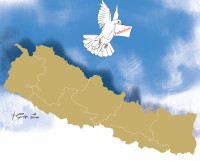

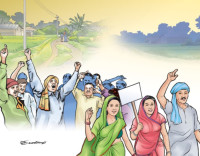
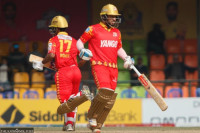
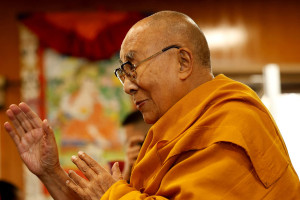
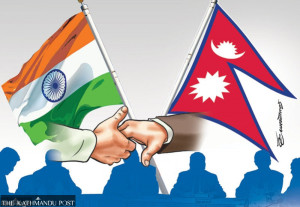


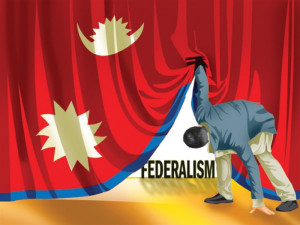


%20(1).jpg&w=300&height=200)

